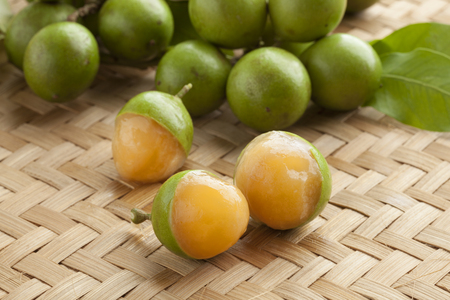Today, we explore another wonder of nature – the Guinep.
The guinep goes by a few aliases – Honeyberry, Mamoncillo, Mapo, Spanish Lime, Skinip or Quenepa. They grow in tropical climates and are popular in the Caribbean. The guinep is also found in Africa, Florida, Mexico and South America and come into season during the summer. They vary from tangy, to stainy tasting, to mega-sweet and children love them.
The small fruit grows in clusters, is a little larger than an olive and packs a powerful nutritional punch with nearly sixty calories in a big serving. The skin is firm and Jamaicans break it mostly with their teeth. Inside the skin is a sweet, jelly-like pulp surrounding a seed (which is a choking hazard to young children). Do note that guineps must be eaten ripe as they contain toxins when unripe.
The seeds are edible and in some cultures are roasted and used to help with stemming diarrhea. The leaves can also be boiled and taken as tea for this same intestinal issue. The flesh can be used in jellies, marmalade, and sauces and makes a refreshing drink. In South America, the seeds are used to make flour for baking.
Guineps contain amino and ascorbic acid, calcium, carbohydrates, fibre, iron and riboflavin, lysine, plus tryptophan, among other properties. They provide great health benefits as they carry anti-inflammatory (great of asthmatics) properties, boost the immune system, prevent constipation, lower blood pressure, aid with insomnia (due to tryptophan content), prevent cardiovascular disease, strokes, prevent herpes (thanks to lysine) and have cancer fighting properties.
Have as many as you like because they can only benefit your health! When was the last time you had guineps?






